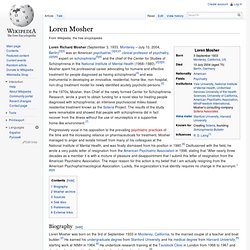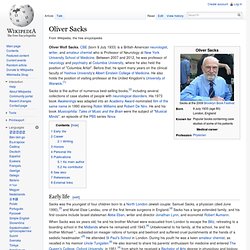

List of serial killers by number of victims. A serial killer is a person who murders two or more people, in two or more separate events over a period of time, for primarily psychological reasons.[1] There are gaps of time between the killings, which may range from a few hours to many years.

This list shows serial killers from the 20th century to present day by number of victims (list of serial killers before 1900). In many cases, the exact number of victims assigned to a serial killer is not known, and even if that person is convicted of a few, there can be the possibility that he/she killed many more. Due to the complex nature of serial killers, their crimes, discrepancies caused by geographic location and/or time, and the investigations related to these persons results in difficulties in organization and ranking.
To address this, multiple categories have been provided in order to more accurately describe the nature of certain serial murders. Serial killers before 1900 Serial killers with the highest known victim count. List of common misconceptions. From Wikipedia, the free encyclopedia This incomplete list is not intended to be exhaustive.

This list corrects erroneous beliefs that are currently widely held about notable topics. Each misconception and the corresponding facts have been discussed in published literature. Note that each entry is formatted as a correction; the misconceptions themselves are implied rather than stated. Arts and culture Food and cooking Roll-style Western sushi. List of collective nouns. A skein of geese This is a list of traditional or whimsical collective nouns.

The large number of collective nouns in English is based on a tradition of venery (words for groups of animals) which arose in the Late Middle Ages. Standard terms for particular groups are listed first in each group and shown in bold. See also[edit] References[edit] Loren Mosher. Loren Richard Mosher (September 3, 1933, Monterey – July 10, 2004, Berlin)[2][3] was an American psychiatrist,[3][4]:21 clinical professor of psychiatry,[2][5][6] expert on schizophrenia[5][6] and the chief of the Center for Studies of Schizophrenia in the National Institute of Mental Health (1968–1980).[2][3][5] Mosher spent his professional career advocating for humane and effective treatment for people diagnosed as having schizophrenia[3] and was instrumental in developing an innovative, residential, home-like, non-hospital, non-drug treatment model for newly identified acutely psychotic persons.[2] Biography[edit] Before conceiving Soteria, Mosher supervised a ward in a psychiatric hospital at Yale University as its assistant professor, prescribed neuroleptics and was not “against” them.

Maricopa County Sheriff's Office controversies. The Maricopa County Sheriff's Office (MCSO) is a law enforcement agency in Maricopa County, Arizona that has been involved in many controversies since 1995.

It is the largest sheriff's office in Arizona state and provides general-service and specialized law enforcement to unincorporated areas of Maricopa County, serving as the primary law enforcement for unincorporated areas of the county as well as incorporated cities within the county who have contracted with the agency for law-enforcement services. It also operates the county jail system. First elected in 1992, Joe Arpaio is the current sheriff of Maricopa County. Arpaio, who promotes himself as "America's Toughest Sheriff,"[1][2] has himself become controversial for his approach to operating the Maricopa County Sheriff's Office.
First elected in 1992, Maricopa County voters reelected him sheriff in 1996, 2000, 2004 and 2008 by double-digit margins. Maricopa County Sheriff's Office[edit] Psychopathy. Hervey M.

Cleckley, a US-American psychiatrist, probably influenced the initial diagnostic criteria for antisocial personality reaction/disturbance in the Diagnostic and Statistical Manual of Mental Disorders (DSM), as did American psychologist George E. Partridge. [citation needed] The DSM and International Classification of Diseases (ICD) subsequently introduced the diagnoses of antisocial personality disorder (ASPD) and dissocial personality disorder, stating that these have been referred to (or include what is referred to) as psychopathy or sociopathy.[1][2][3][4] Canadian psychologist Robert D. Hare later repopularised the construct of psychopathy in criminology with his Psychopathy Checklist.[1][5] Definition[edit] Conceptions[edit] Researchers have noted that there appear to be at least two different conceptions of psychopathy, each with differing policy implications. Hare Psychopathy Checklist. The Hare Psychopathy Checklist-Revised (PCL-R) is the psychological assessment most commonly used to rate psychopathy.[1] It is a 20-item inventory of perceived personality traits and recorded behaviors, intended to be completed on the basis of a semi-structured interview along with a review of 'collateral information' such as official records.

The PCL was originally developed in the 1970s by Canadian psychologist Robert D. Hare for use in psychology experiments, based partly on Hare's work with male offenders and forensic inmates in Vancouver, and partly on an influential clinical profile by American psychiatrist Hervey M. Cleckley first published in 1941. Antisocial personality disorder. Antisocial (or dissocial) personality disorder is characterized by a pervasive pattern of disregard for, or violation of, the rights of others.

There may be an impoverished moral sense or conscience and a history of crime, legal problems, impulsive and aggressive behavior. Salar de Uyuni. Coordinates: Location of Salar de Uyuni.

The origins of the American accent (idea) Oliver Sacks. Oliver Wolf Sacks, CBE (born 9 July 1933) is a British-American neurologist, writer, and amateur chemist who is Professor of Neurology at New York University School of Medicine.

Between 2007 and 2012, he was professor of neurology and psychiatry at Columbia University, where he also held the position of "Columbia Artist". Before that, he spent many years on the clinical faculty of Yeshiva University's Albert Einstein College of Medicine. He also holds the position of visiting professor at the United Kingdom's University of Warwick.[1] Encephalitis lethargica. Encephalitis lethargica or von Economo disease is an atypical form of encephalitis. Also known as "sleepy sickness" (though different from the sleeping sickness transmitted by the tsetse fly), it was first described by the neurologist Constantin von Economo in 1917.[1][2] The disease attacks the brain, leaving some victims in a statue-like condition, speechless and motionless.[3] Between 1915 and 1926,[4] an epidemic of encephalitis lethargica spread around the world; no recurrence of the epidemic has since been reported, though isolated cases continue to occur.[5][6] Symptoms[edit] Encephalitis lethargica is characterized by high fever, sore throat, headache, lethargy, double vision, delayed physical and mental response, sleep inversion and catatonia.[3] In severe cases, patients may enter a coma-like state (akinetic mutism).
Meme. A meme (/ˈmiːm/ meem)[1] is "an idea, behavior, or style that spreads from person to person within a culture. "[2] A meme acts as a unit for carrying cultural ideas, symbols, or practices that can be transmitted from one mind to another through writing, speech, gestures, rituals, or other imitable phenomena with a mimicked theme. Supporters of the concept regard memes as cultural analogues to genes in that they self-replicate, mutate, and respond to selective pressures.[3] The word meme is a shortening (modeled on gene) of mimeme (from Ancient Greek μίμημα Greek pronunciation: [míːmɛːma] mīmēma, "imitated thing", from μιμεῖσθαι mimeisthai, "to imitate", from μῖμος mimos "mime")[4] and it was coined by the British evolutionary biologist Richard Dawkins in The Selfish Gene (1976)[1][5] as a concept for discussion of evolutionary principles in explaining the spread of ideas and cultural phenomena.
Dawkins' own position is somewhat ambiguous: he obviously welcomed N. Milgram experiment. The experimenter (E) orders the teacher (T), the subject of the experiment, to give what the latter believes are painful electric shocks to a learner (L), who is actually an actor and confederate. The subject believes that for each wrong answer, the learner was receiving actual electric shocks, though in reality there were no such punishments.
Being separated from the subject, the confederate set up a tape recorder integrated with the electro-shock generator, which played pre-recorded sounds for each shock level.[1] The experiments began in July 1961, three months after the start of the trial of German Nazi war criminal Adolf Eichmann in Jerusalem. Milgram devised his psychological study to answer the popular question at that particular time: "Could it be that Eichmann and his million accomplices in the Holocaust were just following orders? Could we call them all accomplices? " Legends surrounding the papacy. The papacy has been surrounded by numerous legends. Among the most famous are the claims that the Papal Tiara bears the number of the beast inscriptions, that a woman was once elected pope, or that the current pope will be the last Pope.
The two former claims have been independently determined to be false. The latter claim has been shown to be false for every known pope barring the incumbent; but it remains theoretically possible. List of screw drives. A screw drive is the system used to turn a screw.[1][2] At a minimum, it is a feature on the screw that allows torque to be applied to it. Usually it also involves a mating tool, such as a screwdriver, that is used to turn it. The following heads are categorized based on commonality, with the less common drives being classified as "tamper-resistant". Qualia. In philosophy, qualia (/ˈkwɑːliə/ or /ˈkweɪliə/; singular form: quale) are what some consider to be individual instances of subjective, conscious experience. Nuba peoples. For the musical form, see Andalusi nubah or Nuubaat. Nuba man with body painting. Homonymous hemianopsia. Psychoneuroimmunology. Jerome Corsi.
Phineas Gage. Phineas P. Gage (1823–1860) was an American railroad construction foreman remembered for his improbable[C] survival of a rock-blasting accident in which a large iron rod was driven completely through his head, destroying much of his brain's left frontal lobe, and for that injury's reported effects on his personality and behavior over the remaining twelve years of his life—effects so profound that (for a time at least) friends saw him as "no longer Gage. " Long known as "the American Crowbar Case"—once termed "the case which more than all others is calculated to excite our wonder, impair the value of prognosis, and even to subvert our physiological doctrines"[2]—Phineas Gage influenced nineteenth-century discussion about the mind and brain, particularly debate on cerebral localization, and was perhaps the first case to suggest that damage to specific parts of the brain might affect personality.[1]:ch7-9[3] Background[edit] Gage's injury[edit]
Mount Roraima. Mount Roraima (Spanish: Monte Roraima [ˈmonte roˈɾaima], also known as Tepuy Roraima and Cerro Roraima; Portuguese: Monte Roraima [ˈmõtʃi ʁoˈɾɐ̃jmɐ]) is the highest of the Pakaraima chain of tepui plateau in South America.[4]:156 First described by the English explorer Sir Walter Raleigh in 1596, its 31 km2 summit area[4]:156 consists on all sides of cliffs rising 400 metres (1,300 ft). The mountain also serves as the triple border point of Venezuela, Brazil and Guyana.[4]:156.